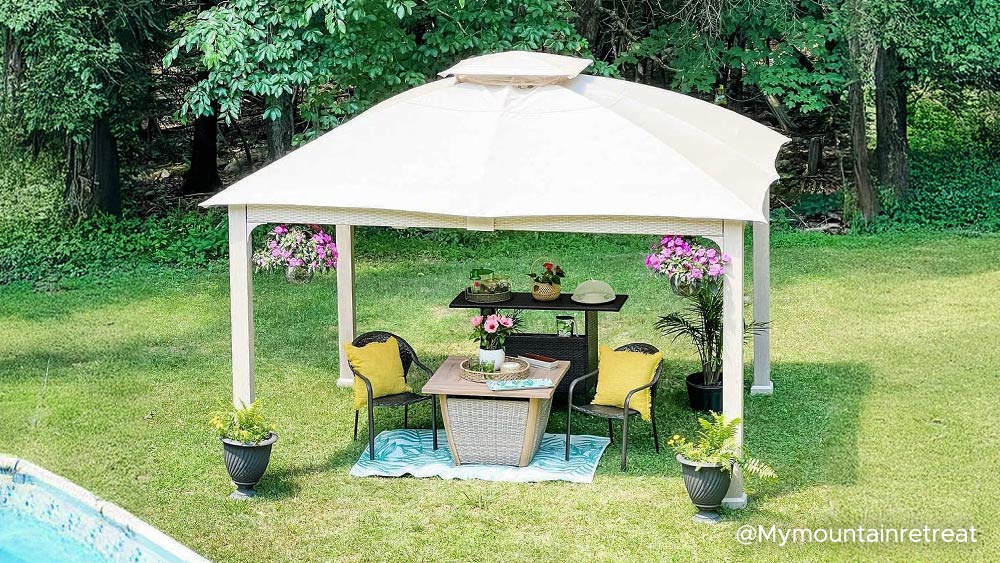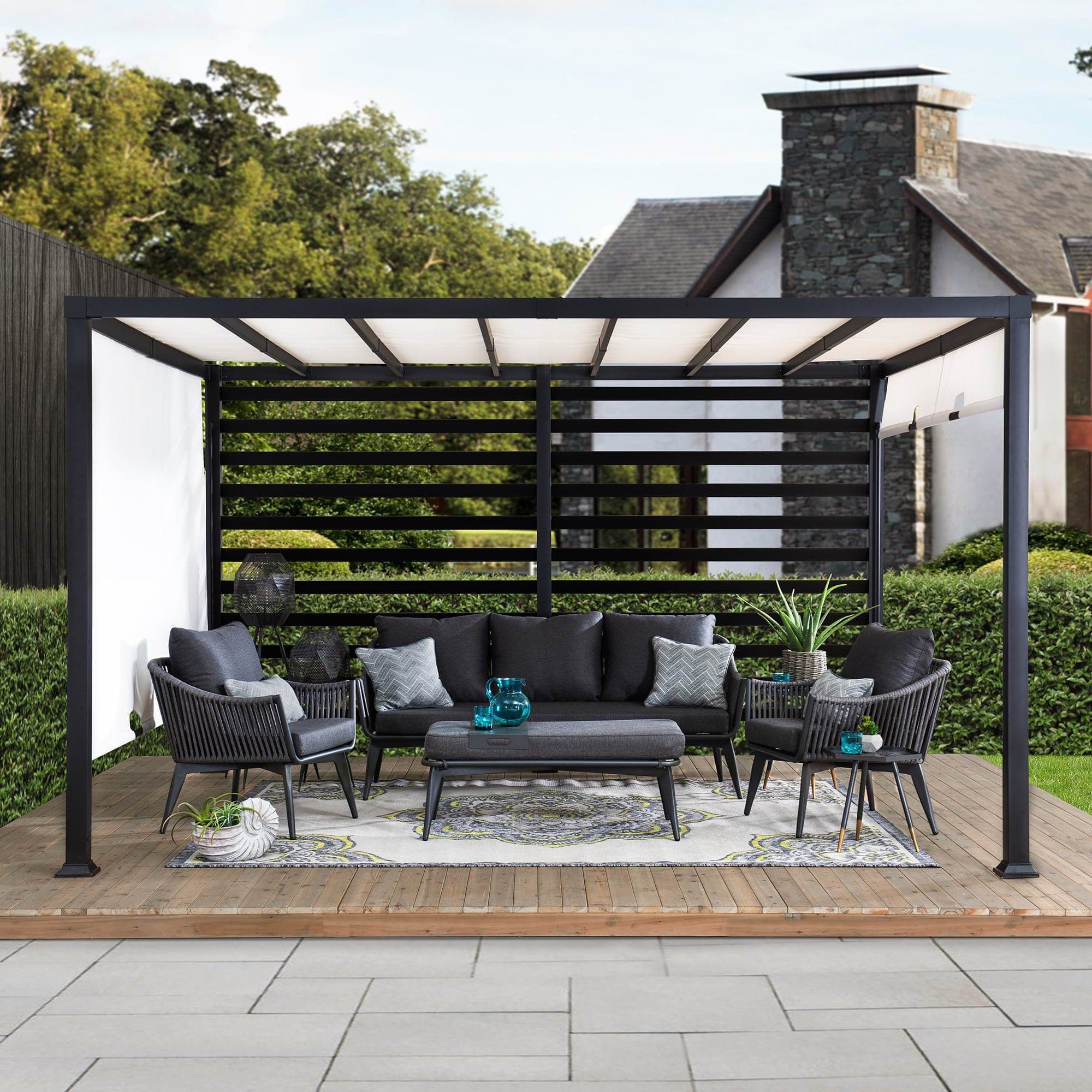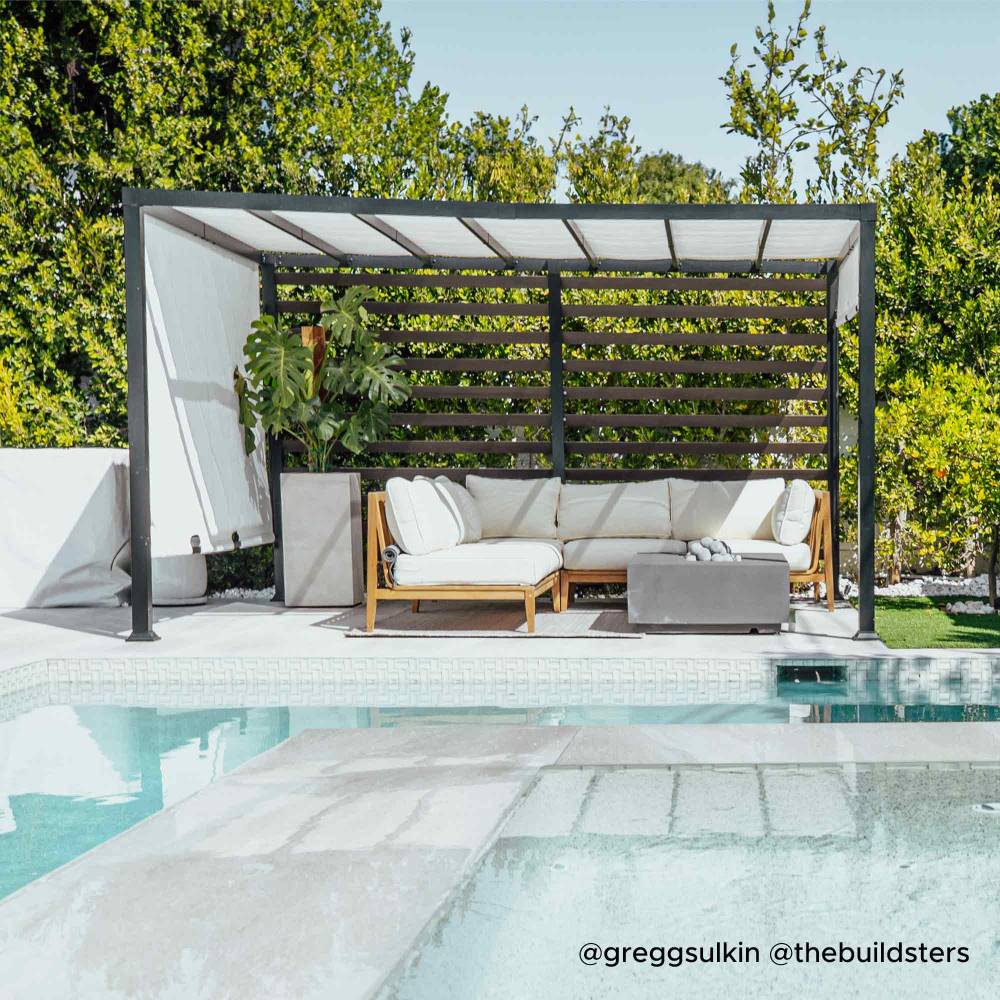Gazebos are a great way to create shaded, inviting spaces in your backyard, patio, or garden. When shopping for one, many homeowners face a key decision: should you go with a soft-top gazebo or invest in a hardtop? At first glance, soft-tops may seem more affordable, but are they really cheaper in the long run?
In this comprehensive guide, we’ll dive deep into the cost comparison between soft-top and hardtop gazebos—not just the purchase price, but also maintenance, durability, lifespan, and total value over time. We’ll also look at several SUNJOY models in both categories to help you decide which type makes more sense for your outdoor space and budget.
Initial Cost Comparison
There’s no denying it—soft-top gazebos usually have a lower upfront price. You can often find models ranging from $200 to $800 depending on size and quality. In contrast, hardtop gazebos typically start around $800 and can exceed $2,500, depending on materials, design, and additional features like planters or curtain systems.
For example:
SUNJOY 11x13 Soft-Top Gazebo with Netting and Curtains: Often priced under $1,200.
SUNJOY 11x13 Hardtop with Solar Panel, LED Lights and Ceiling Hook: A popular model with a list price around $2,400.
Soft-tops win the entry-level affordability round—but there’s more to the story.
Maintenance & Upkeep Costs
Soft-top gazebos require more maintenance over time. The fabric canopy is vulnerable to UV damage, mildew, and wear from wind and rain. Even with a quality polyester or canvas top, you may find yourself replacing it every 1 to 3 years.
Extra maintenance, such as waterproof sprays or patch kits, adds up.
Hardtop gazebos are far more durable. Powder-coated steel or aluminum roofs resist rust, fading, and structural damage much better.
Routine maintenance is limited to occasional cleaning.
The roof may last over 10 years with minimal care.
In the long run, maintenance favors hardtops.
Durability and Weather Resistance
When it comes to year-round durability, hardtops are the clear winner. Their solid roof construction can handle:
Snow loads (in certain models)
Heavy wind (especially when anchored properly)
Intense UV exposure without breaking down
Soft-tops generally need to be taken down during snowstorms or hurricanes. High wind can tear fabric or bend frames if not reinforced.
For homeowners in harsh climates, hardtops provide more peace of mind and lower replacement costs.
Lifespan: How Long Will It Last?
Let’s break it down:
Soft-top gazebos: 3–5 years average lifespan, assuming fabric is replaced once or twice.
Hardtop gazebos: 10–20 years or more with proper care.
So while you may save upfront with a soft-top, you might need to buy two or three of them in the time a hardtop lasts.
This makes hardtop gazebos more cost-effective long-term, especially if you plan to stay in your home.
Installation and Setup Time
Soft-top gazebos are quicker to assemble, often with 1–2 people and basic tools. Ideal for:
Temporary or seasonal use
Renters or frequent movers
Hardtops require more effort and possibly professional installation. However, once set up, they’re often permanent fixtures.
Your choice depends on how mobile or temporary you want the setup to be.
Customization & Functionality
Hardtops generally offer more built-in features, like:
Hooks for ceiling fans or lights
Mosquito netting and privacy curtains
Planter attachments
Soft-tops also support netting and curtains but lack the structural support for heavier upgrades.
If you want to create a multifunctional outdoor room, hardtops offer more flexibility and style options.
SUNJOY Models to Compare
Here are a few top-rated options from SUNJOY to compare quality, value, and features:
SUNJOY 11x13 Soft-Top Gazebo with 2-Tier Canopy and Netting
Breathable fabric top
Lightweight steel frame
Easy to install
Great for seasonal use
SUNJOY 10x12 Steel Roof Hardtop Gazebo with Aluminum Frame
Vented roof for air circulation
Powder-coated to resist rust and UV
Long lifespan
Heavy-duty anchoring base
SUNJOY 13x15 Hardtop Gazebo with Planters and Privacy Curtains
Premium aesthetic
Full-shade steel roof
Built-in curtain rails and planters
These examples show that both styles can look great—but hardtops offer more long-term investment value.
Which Type Is Right for You?
Here’s how to decide:
Choose a soft-top gazebo if:
You need a budget-friendly solution
You plan to use it seasonally or occasionally
You want easy setup and storage
Choose a hardtop gazebo if:
You want a permanent backyard structure
You live in a climate with high winds, snow, or extreme sun
You’re looking for the best long-term value
Final Verdict: Is Soft-Top Really Cheaper in the Long Run?
Not necessarily. While the initial price of soft-top gazebos is lower, the need for replacements, higher maintenance, and shorter lifespan can make them more expensive over time.
Hardtop gazebos, like those from SUNJOY, provide a long-term outdoor living solution with fewer surprises. If you’re thinking about comfort, durability, and design continuity, the hardtop route is worth the higher initial investment.
In short: you get what you pay for—and in the case of gazebos, paying more upfront often saves you later.






